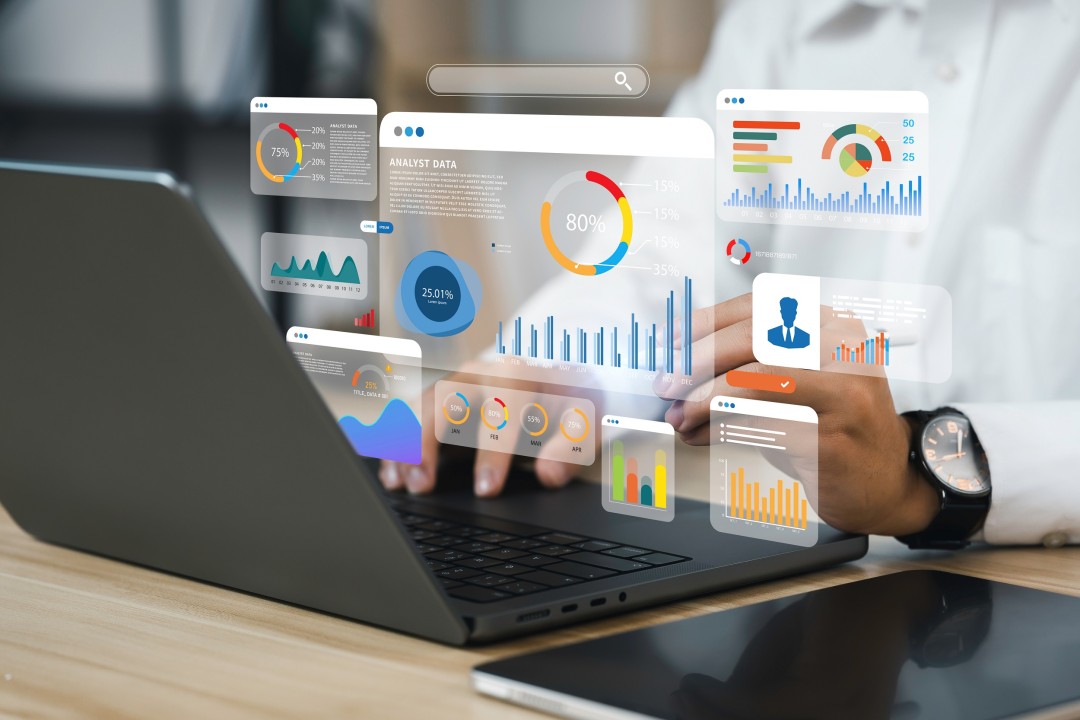Best Digital Marketing and Website Development Company in Vaishali
How to Use Data Analytics to Enhance Marketing Campaigns
In today’s data-driven world, the role of data analytics in shaping and optimizing marketing campaigns cannot be overstated. Marketers are no longer making decisions based on gut feelings or guesswork—they’re relying on data to understand customer behavior, improve campaign performance, and drive meaningful results. By harnessing the power of data analytics, businesses can gain valuable insights into their marketing efforts and fine-tune their strategies for maximum impact. In this blog, we’ll explore how you can use data analytics to enhance your marketing campaigns and achieve better results.

1. Understanding Your Audience Better
Data analytics provides in-depth insights into customer demographics, behaviors, preferences, and interactions with your brand. By analyzing data from various touchpoints—such as website visits, social media engagements, email responses, and purchasing behaviors—you can build detailed customer profiles that help you understand who your target audience is and what they want.
With this information, you can create more personalized campaigns tailored to the needs and interests of your customers, rather than relying on broad, generalized messaging. Understanding your audience on a deeper level allows you to deliver relevant content, products, and offers that resonate with them, increasing the likelihood of conversions.
2. Segmenting Your Audience for Targeted Campaigns
One of the most powerful ways to use data analytics in marketing is through audience segmentation. By dividing your audience into distinct groups based on shared characteristics such as age, location, buying behavior, or interests, you can create targeted marketing campaigns that speak directly to each segment.
Data analytics allows you to identify these segments by analyzing customer data from various sources, including website analytics, CRM systems, and social media platforms. Once segmented, you can create tailored messaging and offers for each group, resulting in higher engagement rates, better customer retention, and improved campaign performance.
3. Optimizing Marketing Channels and Campaigns
Data analytics can help you understand which marketing channels are driving the most traffic, conversions, and ROI. By analyzing metrics such as click-through rates (CTR), conversion rates, and cost-per-click (CPC), you can determine which platforms—such as social media, email marketing, search engine ads, or organic search—are performing best.
With these insights, you can allocate your marketing budget more effectively, investing more in high-performing channels and reducing spend on underperforming ones. Data allows you to continually optimize your marketing campaigns to ensure you’re reaching the right audience on the right platforms with the most effective messaging.
4. A/B Testing and Experimentation
A/B testing (or split testing) is a method of comparing two versions of a marketing element—such as an email subject line, landing page design, or call-to-action button—to determine which one performs better. Data analytics is essential in conducting A/B tests, as it helps you collect, analyze, and compare the results to identify the most successful option.
By running A/B tests on different campaign elements and analyzing the performance of each variation, you can make data-driven decisions that lead to better results. Over time, A/B testing enables you to continuously optimize your campaigns for greater effectiveness.
5. Tracking Campaign Performance in Real Time
One of the key benefits of data analytics in marketing is the ability to track campaign performance in real time. With tools like Google Analytics, marketing automation platforms, and social media analytics dashboards, you can monitor key metrics such as website traffic, bounce rates, engagement rates, and sales conversions as they happen.
Real-time data enables you to make quick adjustments to your campaigns based on what’s working and what’s not. If you notice a drop in performance, you can tweak your messaging, creative, or targeting immediately to improve results. Real-time analytics help you stay agile and responsive, ensuring your campaigns remain on track to achieve their goals.
6. Predicting Future Trends and Behaviors
By analyzing historical data, businesses can predict future trends and customer behaviors, enabling them to be proactive rather than reactive in their marketing strategies. Predictive analytics uses machine learning algorithms and statistical techniques to identify patterns in data and forecast outcomes such as customer lifetime value (CLV), churn rate, and potential sales growth.
This forward-looking approach allows you to optimize your campaigns for future success. For example, by understanding which products or services are likely to be in high demand, you can create marketing campaigns that capitalize on these trends and drive more sales.
7. Improving Customer Retention and Loyalty
Data analytics not only helps with customer acquisition but also plays a critical role in customer retention. By analyzing customer behavior and interactions over time, you can identify patterns that indicate when a customer is likely to churn or become disengaged. Armed with this knowledge, you can take proactive steps to improve customer retention.
For instance, if data shows that a customer who hasn’t made a purchase in a while is still engaging with your brand on social media, you can target them with a personalized email offering a discount or a special offer to re-engage them. Analytics help you build stronger, long-lasting relationships with customers by delivering tailored experiences that increase loyalty.
8. Maximizing ROI Through Data-Driven Decisions
One of the most important ways that data analytics enhances marketing campaigns is by enabling businesses to maximize their return on investment (ROI). With the ability to measure the effectiveness of each aspect of a campaign—from ad spend to creative performance—you can identify areas of waste and focus your resources where they will generate the best results.
By optimizing your campaigns based on data, you can reduce unnecessary costs and allocate your budget to high-performing tactics, ensuring that every dollar spent on marketing yields the highest possible ROI.

Conclusion:
Data analytics has revolutionized the way businesses approach marketing campaigns. By providing actionable insights into customer behavior, marketing performance, and future trends, data analytics empowers businesses to create more personalized, effective, and profitable campaigns. Whether you’re tracking customer interactions, running A/B tests, or predicting future trends, data allows you to optimize your marketing efforts and achieve measurable success.
By integrating data analytics into your marketing strategy, you can make informed decisions that drive growth, improve customer engagement, and increase your ROI. Embrace the power of data analytics today and watch your marketing campaigns soar to new heights.
